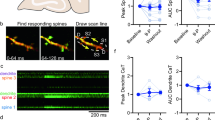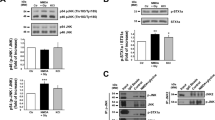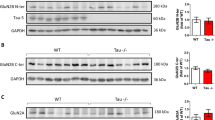Abstract
The putative excitatory transmitters glutamate and aspartate, as well as their excitatory analogues, can kill neurones in the central nervous system and may thus be involved in the pathogenesis of various neurodegenerative disorders1. Several studies have suggested that postsynaptic receptors are important in the mechanism of toxicity2. However, presynaptic factors might also be involved because, in some brain areas, the neurotoxicity of kainate (a potent structural analogue of glutamate) is greatly reduced following elimination of afferent excitatory innervation3–6, even though the postsynaptic excitatory potency of kainate may be unaltered in these conditions7. The supply of glutamate from the afferent nerve endings has been suggested to be a necessary factor3,6,8. Recently, Ferkany, Zaczec and Coyle9 concluded from studies on slices of mouse cerebellum that kainate activates presynaptic kainate receptors on parallel fibre terminals to release glutamate and that it is the postsynaptic interaction between kainate and the released amino acid that is instrumental in causing neuronal necrosis. The more direct evidence we report here does not support these conclusions.
This is a preview of subscription content, access via your institution
Access options
Subscribe to this journal
Receive 51 print issues and online access
$199.00 per year
only $3.90 per issue
Buy this article
- Purchase on Springer Link
- Instant access to full article PDF
Prices may be subject to local taxes which are calculated during checkout
Similar content being viewed by others
References
Coyle, J. T. et al. Neurosci. Res. Prog. Bull. 19, 329–427 (1981).
Olney, J. W. in Kainic Acid as a Tool in Neurobiology (eds McGeer, E. G., Olney, J. W. & McGeer, P. L.) 95–121 (Raven, New York, 1978).
Biziere, K. & Coyle, J. T. Neurosci. Lett. 8, 303–310 (1978).
McGeer, E. G., McGeer, P. L. & Singh, K. Brain Res. 139, 381–383 (1978).
Kohler, C., Schwarcz, R. & Fuxe, Neurosci. Lett. 10, 241–246 (1978).
Streit, P., Stella, M. & Cuenod, M. Brain Res. 187, 45–57 (1980).
McLennan, H. Neurosci. Lett. 18, 313–316 (1980).
McGeer, E. G. & McGeer, P. L. Int. Rev. Neurobiol. 22, 173–204 (1981).
Ferkany, J. W., Zaczec, R. & Coyle, J. T. Nature 298, 757–759 (1982).
Garthwaite, J., Woodhams, P. L., Collins, M. J. & Balazs, R. Brain Res. 173, 373–377 (1979).
Garthwaite, J. & Wilkin, G. P. Neuroscience 7, 2499–2514 (1982).
Okamoto, K. & Quastel, J. H. Proc. R. Soc. B 184, 83–90 (1973).
Garthwaite, J. & Gilligan, G. J. Neuroscience (in the press).
Ferkany, J. W. & Coyle, J. T. J. Pharmac. exp. Ther. 255, 399–406 (1983).
Krespan, B., Berl, S. & Nicklas, W. J. J. Neurochem. 38, 509–518 (1982).
Monaghan, D. T. & Cotman, C. W. Brain Res. 252, 91–100 (1982).
Garthwaite, J. Neuroscience 7, 2491–2497 (1982).
Author information
Authors and Affiliations
Rights and permissions
About this article
Cite this article
Garthwaite, J., Garthwaite, G. The mechanism of kainic acid neurotoxicity. Nature 305, 138–140 (1983). https://doi.org/10.1038/305138a0
Received:
Accepted:
Issue Date:
DOI: https://doi.org/10.1038/305138a0
This article is cited by
-
Neurotoxicity of kainic acid in the rat cochlea during early developmental stages
European Archives of Oto-Rhino-Laryngology (1990)
-
The toxin kainic acid: a study of avian nerve and glial cell response utilizing tritiated kainic acid and electron microscopic autoradiography
Acta Neuropathologica (1988)
-
Influence of the plasma glucose level on brain damage after systemic kainic acid injection in the rat
Acta Neuropathologica (1986)
-
The mechanism of kainic acid neurotoxicity
Nature (1984)
-
The mechanism of kainic acid neurotoxicity (reply)
Nature (1984)
Comments
By submitting a comment you agree to abide by our Terms and Community Guidelines. If you find something abusive or that does not comply with our terms or guidelines please flag it as inappropriate.



